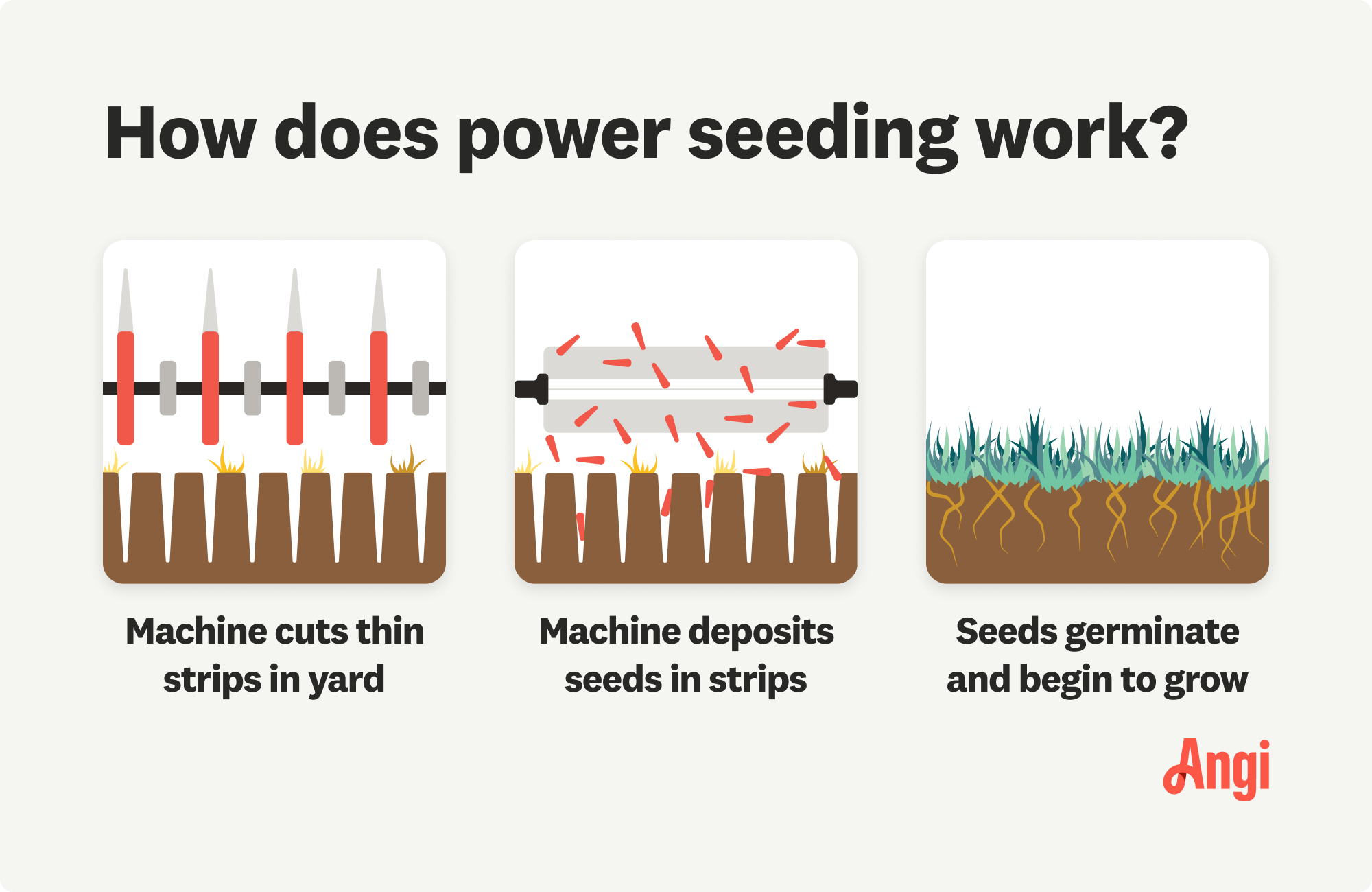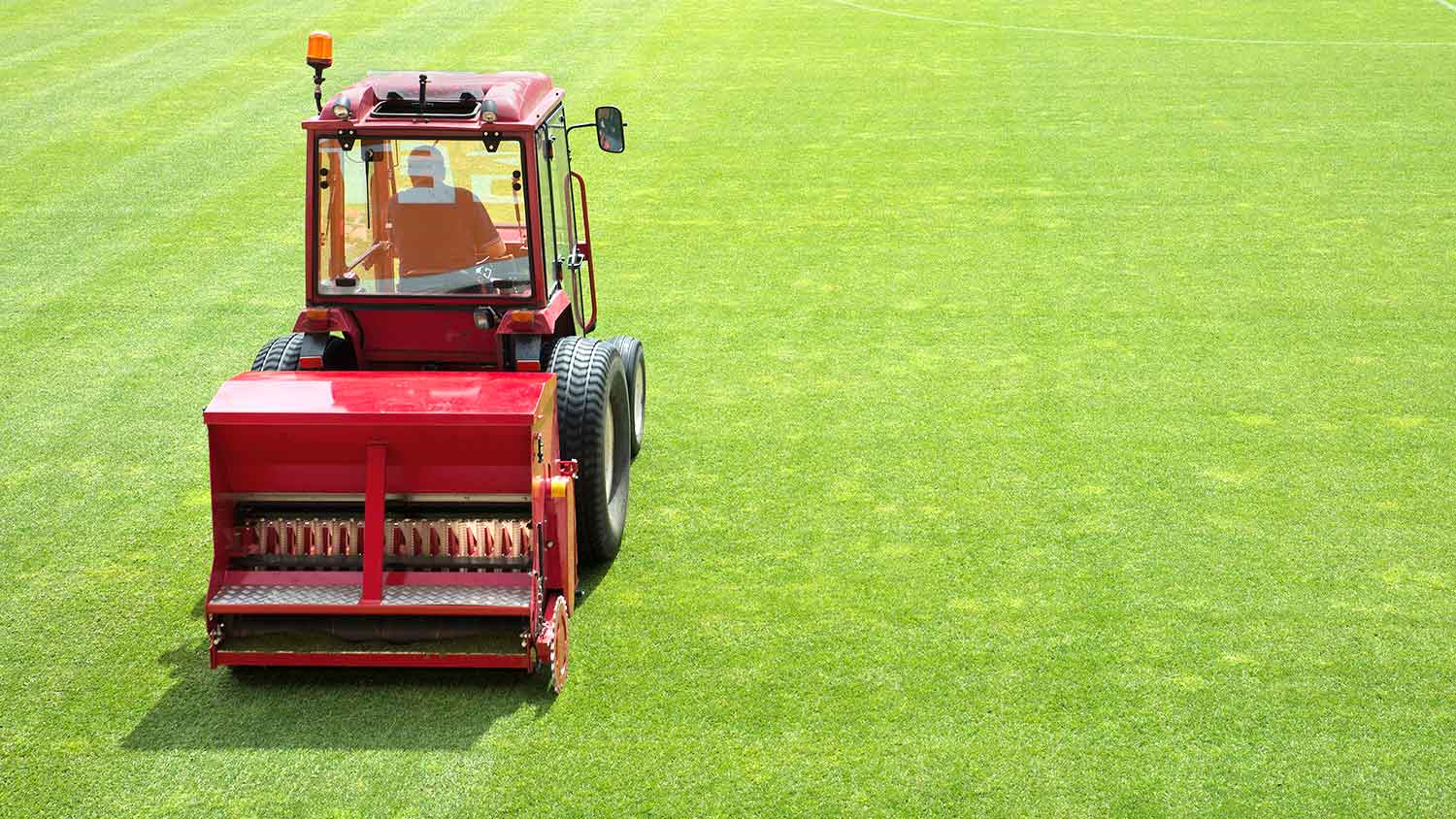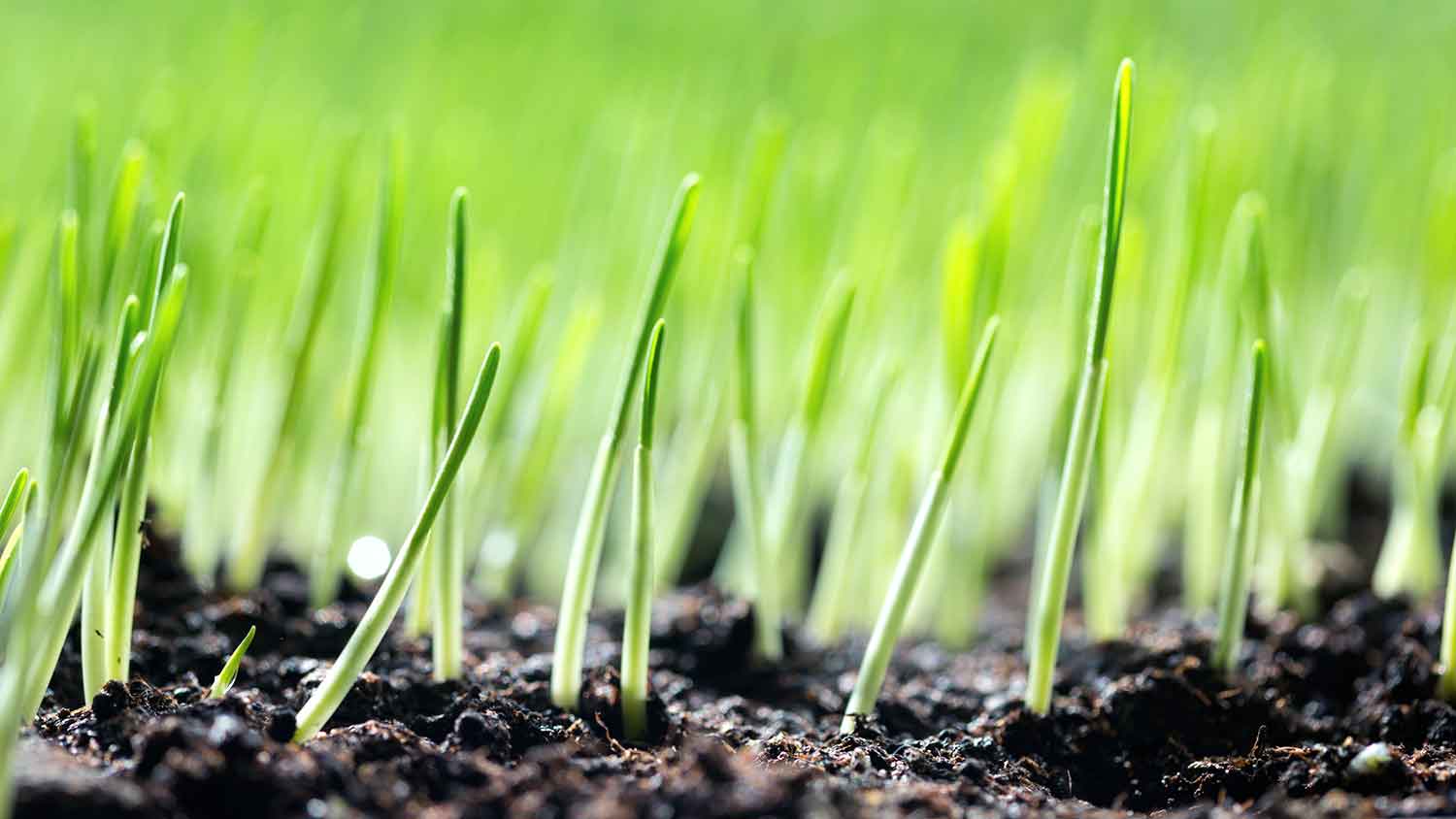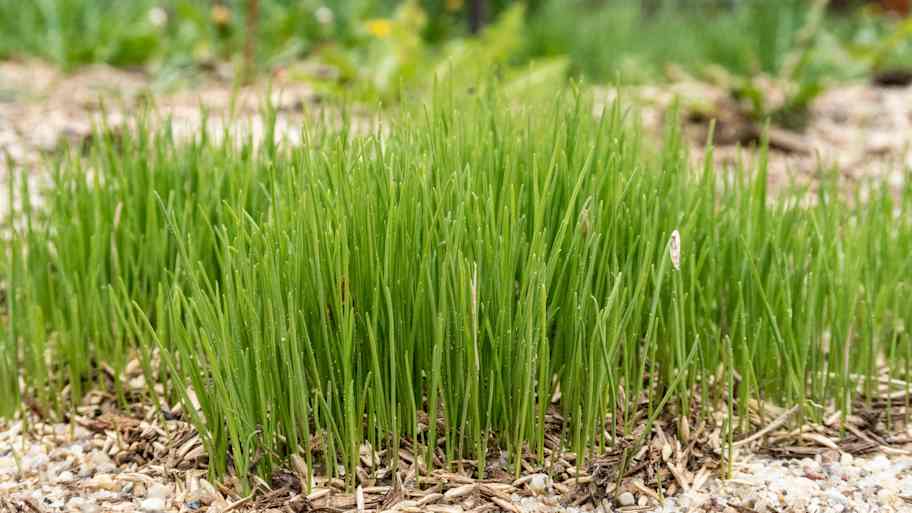
Discover the cost to fertilize your lawn, including average prices, key factors, and tips to help homeowners budget for a lush, healthy yard.
Give your grass seed the power


Power seeding relies on special machinery to plant grass seeds.
The machine cuts narrow divots in the lawn to plant seeds into.
The seeds have more soil contact, boosting germination rates.
Power seeding wastes less grass seed than overseeding.
Power seeding costs about $0.09 to $0.18 per square foot.
You’re looking out at your lawn, and all you can see are lumps, patchy grass, and other flaws. While you’re staring at thinning greenery, thinking the grass must be greener on the neighbor’s side of the fence, you might start to wonder if power seeding could give your lawn a boost. So what is power seeding anyway? Let’s weed through what this process is and how it could impact your grass.


Power seeding is a process of adding grass seed into your lawn’s soil using specialized machinery. Sometimes called slice or slit seeding, power seeding carefully creates thin lines through the soil, all without damaging your existing grass. The seeds are pushed directly into the soil, giving them the best chance of germination.
While overseeding and power seeding are methods of planting grass, aerating a lawn is a bit different. Aeration helps boost soil health, which can complement seeding methods to improve yard health.
Overseeding or seeding a lawn is a method of manually pouring grass seeds all over a lawn. Some of these seeds will make contact with soil, giving the seeds a chance to grow roots and ultimately help fill in the lawn with thicker grass. Pairing overseeding with aeration allows more grass seeds to get into the soil and take root, rather than washing away as runoff.
Lawn aeration is a process that uses tools to poke holes in the lawn. While poking holes, the aeration tool pulls out small plugs, about two or three inches deep, from the soil. This process helps break up compact soil and allows oxygen, carbon dioxide, and water to better reach the roots of your grass. Aeration can go hand-in-hand with overseeding to help new grass seeds get better established in the soil.

Before you can decide if power seeding is worth it for your lawn, you’ll want to weigh the pros and cons of this process, especially compared to aeration and overseeding.
Increases seed-to-soil contact
Boosts the number of seeds that germinate
Saves money on grass seed
Makes lawn look thicker and healthier
Requires specialized equipment
Leaves rows or lines across the lawn until the grass grows in
Can be more expensive upfront compared to manually seeding the lawn, especially if you rent or buy the equipment
The cost of seeding a lawn depends on lawn size, type of grass, and the seeding method. Power seeding costs about $0.09 to $0.18 per square foot. Aeration and overseeding costs about $0.08 to $0.25 per square foot.
Power seeding is a good option if you want to repair a thinning or patchy lawn. A lawn that looks healthy but could use a boost will be better off with a round of aeration and maybe overseeding. Ultimately, if you’re still unsure if power seeding is right for you, consult a lawn seeding company.
Power seeding or even overseeding a lawn typically works best in the fall. At this time of year, the weather tends not to be too hot or cold for grass to grow. The less harsh, hot temperatures also make it the best time to water grass, as you’ll lose less water to evaporation. Similarly, fall is the best time to aerate your lawn or overseed it.
While it may be tempting to plant new grass seed in the spring, keep in mind that the grass needs as much time as possible for its roots to strengthen enough to stand up to heavy rains and scorching heat.
Hiring a local lawn seeding company is the best way to get started on power seeding your lawn. Because this job requires specialized equipment, you won’t want to attempt to DIY. Instead, turn to specialists who will have the equipment necessary to do the job right. Schedule a power seeding appointment for fall, and be prepared to watch your grass grow thick and lush just in time for the following spring.
From average costs to expert advice, get all the answers you need to get your job done.

Discover the cost to fertilize your lawn, including average prices, key factors, and tips to help homeowners budget for a lush, healthy yard.

Get transparent power seeding cost info to learn what impacts pricing, how to save, and whether to DIY or hire a pro for your lawn’s best results.

Discover average hydroseeding cost, key price factors, and ways to save. Get transparent estimates for your lawn project and make informed decisions for your home.

Ready to give your yard a fresh start? With these tips for grass seed planting, your lush lawn dreams are one step closer to becoming a reality.

Grass seeds thrive in soil rich in nutrients, but a potting mix will not support your grass’ long-term health. Find out which type of soil is best for grass.

If you’re looking to apply fertilizer to your lawn, there are a few things you need to get right first. Make sure you’re ready to answer these lawn fertilizer questions before you start.